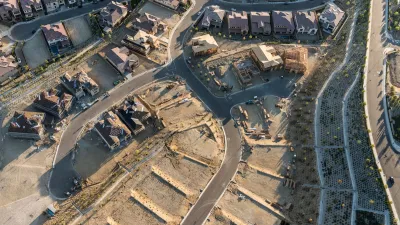Ben Brown takes a hard look at our capacities and limitations in a world more complex than we’d prefer.

"So here we go again. Flood waters rise in southern Louisiana, displacing tens of thousands — some temporarily, others permanently — and potentially costing billions."
"The familiar narrative cycle has cranked up. Right now we’re emerging from the stage where we celebrate the heroism of citizens, volunteers and emergency responders and question the competency of the feds. Next comes the rough accounting of damages and the fights over funding, then the agonizing slog towards a recovery unlikely to ever be complete. Finally will come a lessons-learned wrap-up that could be copied and pasted from reports post-Camille, post-Andrew, post-Katrina, post-Sandy and post a bunch of other recent calamities without a name."
"How to be ready for the next Big One? Better communication at all levels of emergency response. Better advance warning systems. Better ways to prevent folks from living in harm’s way. Same old. If there’s something different this time, it may be this: An increasing uneasiness that we have spent down our capacities for denial, along with the resources required to cope with repetitive disaster. And there’s no turning back."
Ben Brown has been intricately involved in the post-Katrina recovery, as well as the BP Oil Spill. He gives a candid review of new politics for a new normal.
FULL STORY: Unpredictable, High Risk, High Cost: Planning for the worst is the worst

Alabama: Trump Terminates Settlements for Black Communities Harmed By Raw Sewage
Trump deemed the landmark civil rights agreement “illegal DEI and environmental justice policy.”

Planetizen Federal Action Tracker
A weekly monitor of how Trump’s orders and actions are impacting planners and planning in America.

The 120 Year Old Tiny Home Villages That Sheltered San Francisco’s Earthquake Refugees
More than a century ago, San Francisco mobilized to house thousands of residents displaced by the 1906 earthquake. Could their strategy offer a model for the present?

In Both Crashes and Crime, Public Transportation is Far Safer than Driving
Contrary to popular assumptions, public transportation has far lower crash and crime rates than automobile travel. For safer communities, improve and encourage transit travel.

Report: Zoning Reforms Should Complement Nashville’s Ambitious Transit Plan
Without reform, restrictive zoning codes will limit the impact of the city’s planned transit expansion and could exclude some of the residents who depend on transit the most.

Judge Orders Release of Frozen IRA, IIJA Funding
The decision is a victory for environmental groups who charged that freezing funds for critical infrastructure and disaster response programs caused “real and irreparable harm” to communities.
Urban Design for Planners 1: Software Tools
This six-course series explores essential urban design concepts using open source software and equips planners with the tools they need to participate fully in the urban design process.
Planning for Universal Design
Learn the tools for implementing Universal Design in planning regulations.
Clanton & Associates, Inc.
Jessamine County Fiscal Court
Institute for Housing and Urban Development Studies (IHS)
City of Grandview
Harvard GSD Executive Education
Toledo-Lucas County Plan Commissions
Salt Lake City
NYU Wagner Graduate School of Public Service





























